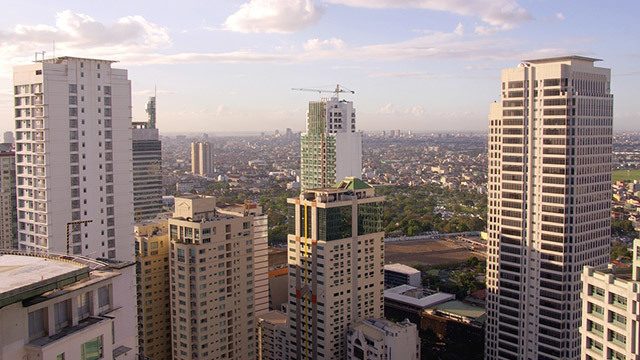SUMMARY
This is AI generated summarization, which may have errors. For context, always refer to the full article.

MANILA, Philippines – Housing prices in the country continued to climb in the second quarter of the year, buoyed by demand for houses outside the National Capital Region (NCR), according to data released by the Bangko Sentral ng Pilipinas (BSP) on Friday, October 14.
The Residential Real Estate Price Index (RREPI), the BSP’s latest quarterly report on home prices, showed that housing costs grew faster at a rate of 11.3% in Q2 of this year, as the RREPI rose to 122.8 from 110.3 for the same quarter a year ago.
This growth in prices was also higher than the 9.4% increase posted in the first quarter of this year.
Single detached housing units registered the highest growth in prices at 18.6% followed by townhouses at 14.7%, while prices for condominium units decreased marginally by -0.1%
Faster growth outside the capital
The index also showed that the increase in housing prices is increasingly being felt more in Areas Outside the National Capital Region (AONCR).
Growth prices in AONCR accelerated by 18.4% in Q2 compared to the 9.4% increase observed in the first quarter of the year.
The BSP said that is largely due to the higher rate of increase in prices of single detached housing units and townhouses in AONCR compared to those of NCR, noting that the prices of condominium units edged lower in NCR but increased slightly in AONCR.
Growth in NCR housing prices, meanwhile, slowed down to to 2.7% for Q2 2016, compared to the previous quarter’s rise of 9.7%.
The trend of slowing condominiums prices was also observed by online real estate portal Lamudi, which earlier this year predicted a slowdown in the prices mid-range condominiums in the capital due to a glut of supply in the market, while demand for low and high-end condominiums was expected to remain stable.
Housing loans
Instituted at the end of 2015 to monitor the possibility of a housing bubble, the RREPI uses data from approved housing loans to measure the average changes in housing prices over a period of time and across different regions.
For Q2, the BSP noted that 7 out of 10 real estate loans (71.7%) were for the purchase of new housing units.
Around half of the approved residential property loans were for single detached at 50.1%, followed by condominium units at 41.2%, and townhouses at 8.4%.
The index also showed that condominium units were the most common house purchases in the NCR, while single detached houses were mostly acquired in AONCR.
By region, NCR accounted for 42.1% of the total number of residential real estate loans granted during the quarter, followed by Calabarzon (31.5 %), Central Luzon (6.7 %), Central Visayas (5.2 %), Western Visayas (4.9 %), Northern Mindanao (3.4 %) and Davao Region (2 %).
Together, these 7 regions accounted for 95.8 % of total housing loans granted by banks.
The central bank said at the start of the year that stress tests showed no signs of a housing bubble forming.
Out of the 106 banks covered for Q2 2016, 96 banks or 90.6% (consisting of 40 universal and commercial banks and 56 thrift banks) submitted their reports to the BSP.
The RREPI is computed as weighted chain-linked index based on the average appraised value per square meter weighted by the share of floor area of housing units. – Rappler.com
Add a comment
How does this make you feel?
There are no comments yet. Add your comment to start the conversation.